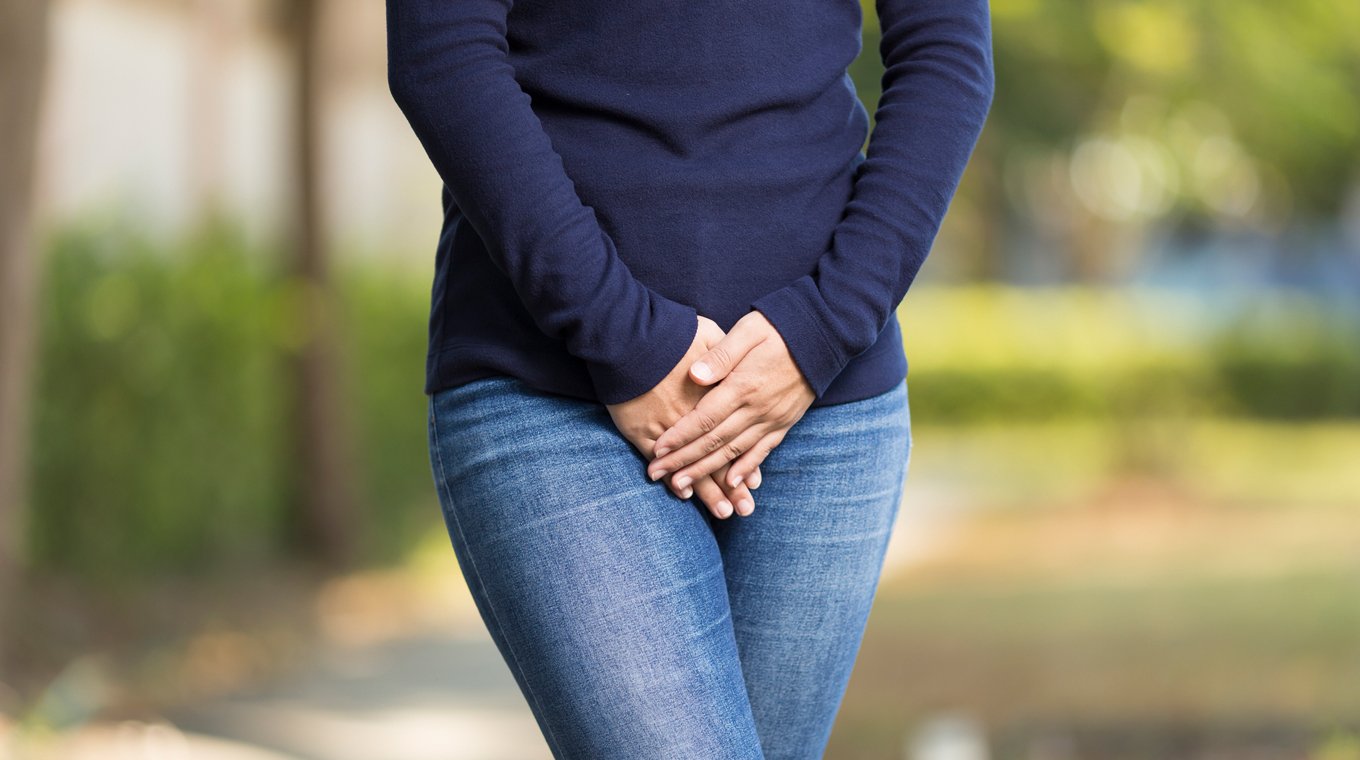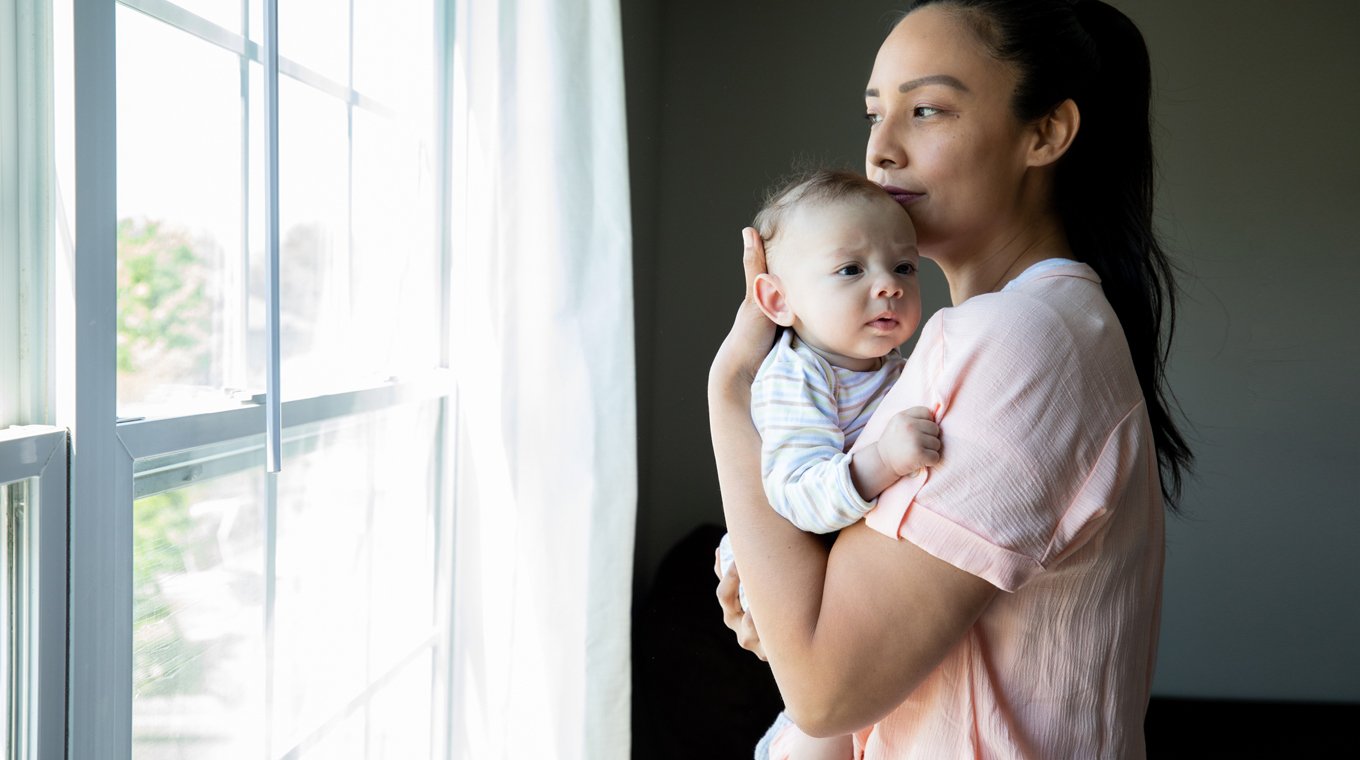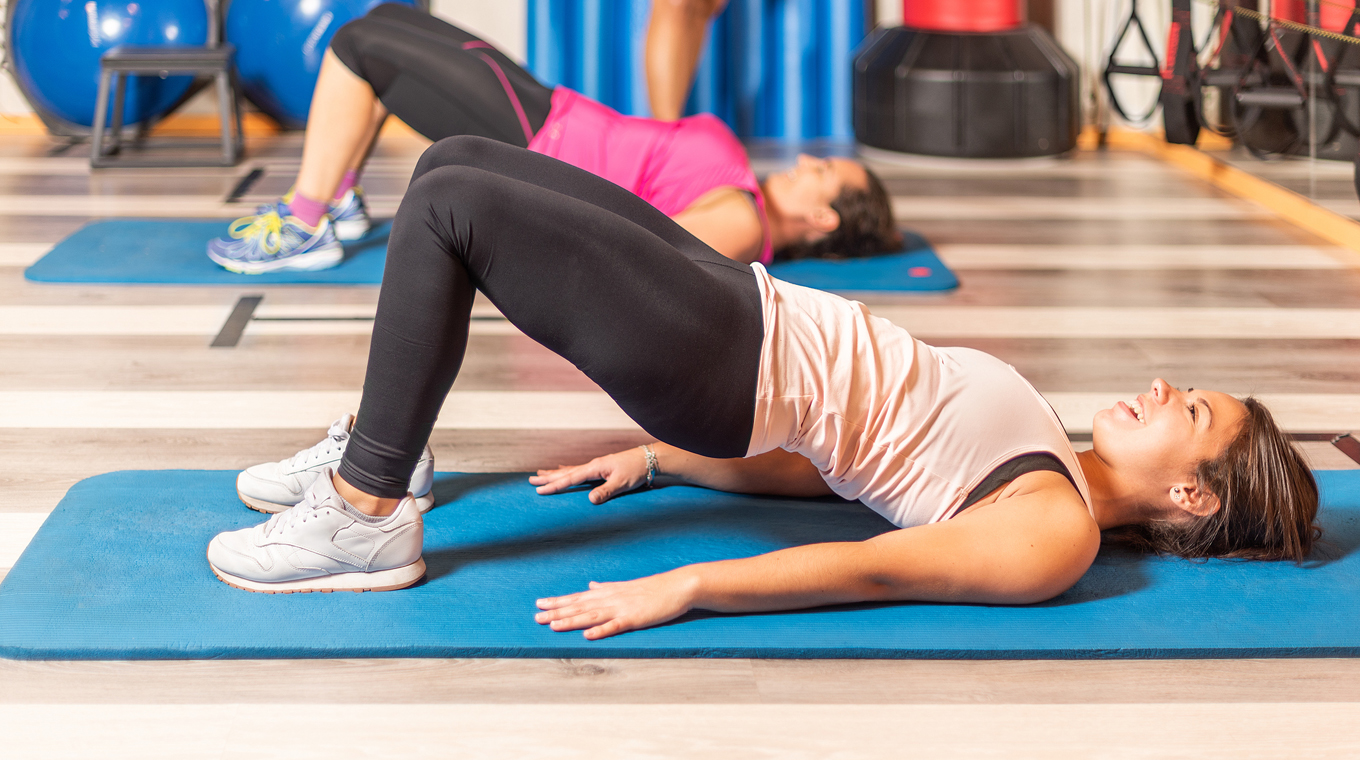In this article
We’ve all been there. It only takes a sneeze, or a hard jump in your kid’s birthday bouncy castle and – oops! – you feel something wet in your jeans. Doctors call it “urinary incontinence,” but most of us just call it, “peeing our pants.” However you say it, incontinence after childbirth is incredibly prevalent among moms.
“About six weeks after giving birth to my daughter, I headed out for a quick run — a much-needed break from the new-baby routine and a chance to reconnect with an activity I loved,” Katherine Hobson told The New York Times. “Ten minutes in, I felt a warm sensation I’d never before experienced. It was not the glow of new motherhood. I had peed my running shorts.”
What is incontinence?

There are two main types of incontinence: stress and urge. If you leak when you forcefully laugh, sneeze, cough, run, jump or lift weights, you have stress incontinence. Compounding the problem are the hormones that make your tissues and joints more elastic for delivery; they also reduce bladder support, allowing urine to leak.
About two thirds of women with stress incontinence also experience urge incontinence, which is caused by an overactive bladder. You get the sudden urge to go, even though your bladder may be nearly empty, and leak before you can get to the bathroom. Urgency incontinence is more common as you age, and may not necessarily be tied to postpartum incontinence.
There is also a third type of incontinence, mixed incontinence, where both stress and urgency is experienced.
Whatever type you may be experiencing, it’s important to mention any leakage to your doctor to assess your problem and for recommended treatments. Also, while rare, chronic leakage could be a sign of a larger problem such as pelvic organ prolapse.
Who is most likely to experience urinary incontinence?

Women who have given birth vaginally are very susceptible to urinary incontinence, as the muscles may have been stretched or damaged during delivery. Some other factors that may make you more susceptible are:
- Being overweight
- If you had incontinence during your pregnancy
- If you had incontinence before getting pregnant
- If you had a multiple pregnancy (twins, triplets, etc.)
- Previously been pregnant and delivered a baby vaginally
- If you had a forceps delivery or vacuum delivery
Most cases resolve in the first year postpartum. But a recent study revealed that only around 25 percent of women seek help for their incontinence, as most women simply endure the problem and use pads for the leakage.
“People need to realize that it doesn’t have to be that way,” Dr. Emily Lukacz, M.D., of UC San Diego Health’s Women’s Pelvic Medicine Center, told The New York Times about the reluctance of postpartum women to seek help. “If having a pad gives them a sense of security, that’s OK, but I’d rather that they don’t have to use it.”
Urinary incontinence after childbirth: Treatment and exercises

It’s important to reach out to a health care professional to assess your problem, and to get started on treatment as soon as possible.
“Women with stress incontinence issues most often will first be referred to a physical therapist who specializes in women’s health,” said Tarek Khalife, M.D., of the Mayo Clinic. “The therapist will coach on how to conduct Kegel exercises to strengthen pelvic floor muscles to work more effectively and efficiently. Should that strategy fail to improve symptoms after six months, the next step is to consider other treatment options.”
Pelvic Floor Therapy
Once your doctor refers you to a physical therapist, they will work with you on strengthening your pelvic floor muscles with Kegels and other exercises. By strengthening the muscles that support your bladder, these exercises will help lessen your incontinence and hopefully eliminate it completely.
Other treatment options to discuss with your doctor:
- Prescription medication to reduce urgency and frequency of urination
- Non-surgical options, such as a pessary, which is a removable inter-vaginal device that puts pressure on the urethra to stop leakage.
- Surgical options
An important thing to remember when it comes to postpartum incontinence is not to suffer in silence and not to be afraid to reach out for help.
“I’m always fascinated by the lack of public discussion about incontinence,” Dr. Jen Gunter, ob-gyn and author of The Vagina Bible, wrote on her blog. “I don’t buy ‘societal squeamishness’ about urine as a reason. Women’s magazines produce articles with great regularity on vaginal mayhem (sigh), and there is an increasing number of articles on menstrual products (yeah!). If we can talk about discharge and blood, why not urine?”